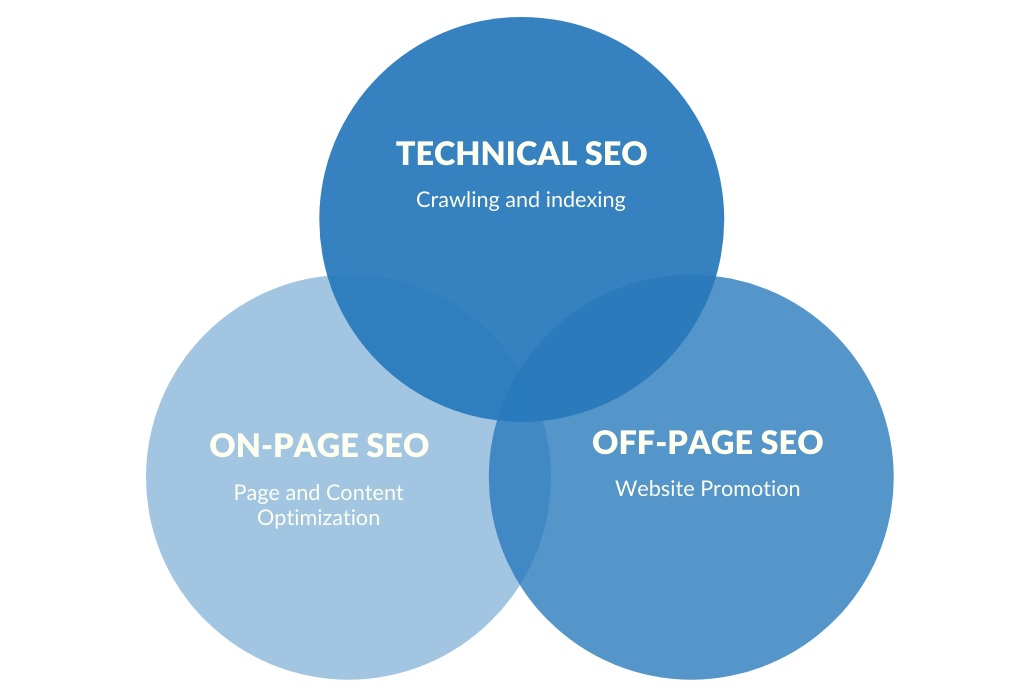
Search Engine Optimisation (SEO) represents an ever-evolving field. Tactics that might have worked yesterday could serve no purpose today. This is one of the challenges businesses continually face. However, there are many SEO-related aspects to appreciate if you hope to leverage the opportunities at your disposal.
The technical nature of search engine optimisation (simply known as “technical SEO”) is a perfect example. So, what exactly is technical SEO? Since SEO seems to be technical, could such a concept be out of our reach?
Let’s take a look at what technical SEO comprises and why it is important. What does this approach have in common with search engines, and what steps can you take to ensure that what goes on “behind the scenes” is never taken for granted? All these questions are important, so let us dive right in.
Technical SEO at a Glance
Ironically enough, technical SEO is directly related to organic search engine rankings. The team at BigCommerce defines technical SEO as follows:
“Optimisations used within servers and websites that are designed to enable search engine spiders to interpret a site with more accuracy.”
In other words, this type of SEO can help to improve your visibility within major SERPs (search engine results pages) such as Google and Bing. This results in better online rankings, more visibility, and ultimately, higher engagement rates. Now that we have a basic grasp of technical SEO, it’s wise to take a look at some of the steps that can be used to improve the overall presence of your budding portal.
Technical SEO Checklist
Technical SEO is not as complicated as it might initially sound if we break this concept down into easily digestible segments. Therefore, our team has taken the time to highlight some key takeaway strategies. Let’s take a more in-depth look.
1. Address Potential Issues with Duplicate Content
There are several problems with duplicate content that need to be addressed, including:
- Readers can become confused.
- Search engines look unfavourably on this.
- Duplicate content can sometimes be used to artificially boost search engine rankings.
Now, we are not speaking about effective marketing methods such as posting replicated content on standalone blogs in this sense. We are focusing on copied or otherwise repetitive material within the website itself. Webmasters should therefore identify and remove any potential issues.
One method is to employ a tool known as a “canonical link element“. Simply stated, this method tells search engines where the primary content within a site is located.
The other option is to prevent multiple publications by changing the settings within your current content management system (CMS). Deleting printer-friendly content and disabling unnecessary session IDs are two ways to avoid duplicate content.
2. XML Sitemaps
You might have heard of an XML sitemap in the past, and yet, no one will blame you if it still sounds confusing. An XML sitemap is a unique file that allows search engines to better understand what is found within your website. Changing the syntax from “sitemap” to “roadmap” is entirely relevant here.
Other details that can be found within a typical XML sitemap include:
- When a page was last modified.
- Which pages are prioritised over others?
- How often you perform manual updates.
These are all crucial metrics that can be used to provide an additional layer of clarity to search engine algorithms.
3. The Importance of Structured Data
Structured data is useful for two main reasons. First, it helps search engines such as Google to interpret what is contained within your pages. This is crucial when we consider that online queries are becoming more targeted in recent times. As a result, your rankings should enjoy a healthy boost.
Another interesting feature of structured data is that it can help to improve the appearance of search results snippets. Specific information is likely to generate a greater amount of interest and, naturally, more inbound traffic to your website.
The only potential issue is that the coding within your website will need to be slightly modified. Assuming that you are not an expert programmer, there are plenty of templates (such as those offered by Yoast) that can be embedded directly within your website.
4. SSL Encryption: All About Security
SSL is considered to represent the veritable backbone of modern digital security. SSL is an acronym for Secure Sockets Layer. Its primary purpose is to encrypt information between the sender and the receiver (such as your website and a client). So, information will always remain secure.
SSL is important in terms of technical SEO because sites equipped with this technology will be preceded by the tag “HTTPS”. Google has preferred this type of protocol since 2014, and it is just as crucial within today’s changing landscape. The good news is that many website hosting services offer SSL encryption as a built-in element.
5. Catering to the Mobile Audience
We are all aware that mobile application development is one of the hottest topics in modern times. The only potential issue is that many websites have yet to adopt a mobile-friendly design. This will cause significant problems from a technical SEO standpoint.
First and foremost, one of the most important Google ranking factors involves whether or not a site has been engineered for smartphone users. Websites that fail to adapt to this changing climate are destined for digital anonymity sooner or later.
We also need to highlight the importance of the user experience (UX). Customers rightfully expect that a site will display the same, regardless of the device in question. Mobile-responsive web design is therefore critical if you hope to target a larger demographic while simultaneously enjoying higher SEO rankings.
6. The Need for Speed
Speed is vital within the digital domain. Of course, slow-loading websites are quite annoying, and we will often choose to look elsewhere for similar services. There is another lesser-known threat that needs to be highlighted here.
Google has recently decided to update its analytical tools to include a “page loading time” variable. As you may have already imagined, the primary purpose of this widget is to place fast-loading pages at or near the top of the search engine results page. Therefore, eliminating any coding or elements that may be slowing down specific pages is always a good idea. Other suggestions include:
- Choosing a fast DNS provider.
- Minimising the use of plugins and scripts.
- Ensuring that image and video files are compressed (particularly important for mobile devices).
- Streamlining the existing coding throughout your website.
As some of these recommendations can be quite challenging, it may be wise to hire a third-party coding professional.
7. Register with Well-Known Indexing Tools
It pays to think ahead in terms of search engine rankings. So, be sure to register with indexing tools such as the Google Search Console. Bing likewise offers a service known as Bing Webmaster Tools. Both bundles will allow you to analyse the performance of your site on a real-time basis. So, you can quickly identify any changes that may need to take place.
The first step is to submit your XML sitemap information (mentioned earlier in this article). Assuming that the code is free from errors, search engines will immediately begin crawling your portal so that its ranking can be determined. Here are a handful of other useful options which these bundles offer:
- Gauging how your site functions with mobile devices.
- Examining any backlinks to your website.
- Removing links labelled as spam.
Thankfully, both tools mentioned above offer a user-friendly appeal and are quite easy to employ.
Learn to Embrace the Technical Side of SEO
Recent studies have shown that 68 per cent of all online purchases begin with a search engine query. As such, rankings are crucial if you hope to rise above the competition. Therefore, the technical aspect of SEO should never be taken for granted.
Grasping some of the concepts outlined above may take a bit of time. This is normal, and it is often better to approach each in its course. This can help to reduce any confusion.
Will search engine optimisation become more challenging in the future? While the ultimate verdict is still out, one thing is certain. Websites will need to keep abreast of SEO practices so that they are one step closer to digital success. Please don’t hesitate to bookmark this article for guidance or inspiration in the future.



